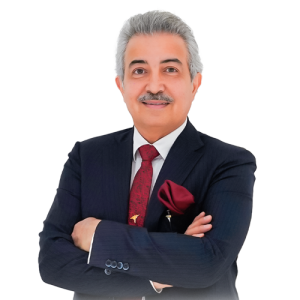Everything You Need to Know
As we age, the natural loss of elasticity and volume in the skin can lead to sagging, wrinkles, and a tired appearance, particularly in the lower face. A mini facelift or midface lift can address these issues by rejuvenating the facial contour and restoring a more youthful look without the extensive recovery time associated with traditional facelifts.
What Is a Mini/Midface Lift?
A mini facelift focuses on the lower third of the face, targeting sagging skin, jowls, and wrinkles around the mouth and chin. In contrast, a midface lift elevates the cheeks and smooths the area beneath the eyes, addressing sagging and hollowness in the midface region. Both procedures can enhance the overall facial structure and create a more youthful appearance.
Benefits of Mini/Midface Lifts
Mini and midface lifts offer numerous advantages, including:
- Less Invasive: These procedures require smaller incisions compared to traditional facelifts, resulting in less trauma to the skin and underlying tissues.
- Shorter Recovery Time: Patients typically experience a quicker recovery, allowing them to return to normal activities sooner.
- Natural-Looking Results: Both procedures are designed to produce subtle yet noticeable improvements, maintaining a natural appearance.
- Enhanced Facial Contours: By lifting and tightening sagging skin, these lifts can restore youthful contours and enhance facial harmony.
Who Is a Candidate for a Mini/Midface Lift?
Ideal candidates for a mini or midface lift typically:
- Are in good overall health with realistic expectations regarding the outcomes of the surgery.
- Have moderate sagging of the facial skin or loss of volume in the midface.
- Do not have significant excess skin that would require a full facelift.
- Are non-smokers or willing to quit prior to surgery to promote better healing.
Consulting with a qualified plastic surgeon will help determine if you are a suitable candidate for these procedures.
The Mini/Midface Lift Process: What to Expect
1. Consultation
During the initial consultation, your surgeon will assess your facial structure, discuss your aesthetic goals, and explain the differences between the mini and midface lifts. They will review your medical history and any medications you may be taking.
2. Preparation
You will receive pre-operative instructions, which may include guidelines for medication use, dietary restrictions, and recommendations for smoking cessation.
3. Procedure
The mini or midface lift surgery typically involves the following steps:
- Anesthesia: The procedure is performed under local anesthesia with sedation or general anesthesia, depending on the extent of the surgery.
- Incision: Incisions are made in discreet locations, such as in the natural creases around the ears or hairline, minimizing visible scarring.
- Lifting and Tightening: The surgeon lifts the underlying tissues and removes excess skin, if necessary, to achieve a more youthful contour.
- Closure: The incisions are carefully closed with sutures or adhesive strips.
The procedure usually takes about one to two hours.
4. Recovery
After surgery, you may experience swelling, bruising, and discomfort in the treated areas. These symptoms typically subside within a week. Most patients can resume normal activities within one to two weeks, but full recovery may take several weeks.
5. Follow-Up Care
Follow-up appointments will be scheduled to monitor your healing progress and assess the results. Your surgeon will provide care instructions and may recommend avoiding strenuous activities during the initial recovery period.
Risks and Complications
While mini and midface lifts are generally safe, potential risks and complications may include:
- Infection: There is a risk of infection at the incision site, which may require treatment.
- Scarring: Although incisions are placed discreetly, some patients may experience noticeable scarring.
- Asymmetry: Some individuals may notice uneven results, which can be addressed with adjustments.
- Nerve Damage: Although rare, temporary nerve damage may occur, leading to altered sensation.
Alternatives to Mini/Midface Lifts
If you’re not ready for surgery or prefer non-surgical options, consider these alternatives:
- Dermal Fillers: Injectable fillers can restore volume and smooth wrinkles in the midface and lower face, offering a non-invasive option with temporary results.
- Botox: Botox can help reduce the appearance of wrinkles and fine lines in the forehead and around the eyes, complementing the effects of a mini or midface lift.
- Thread Lift: This minimally invasive procedure uses sutures to lift and tighten the skin without surgery, although results are temporary.



